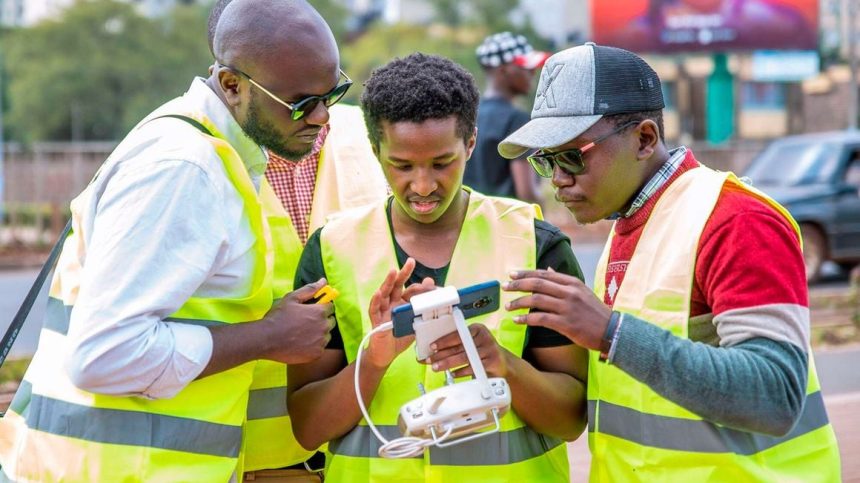As a boy growing up in Kawangware, Nairobi, Mohamed Akasha once asked his parents about career options. He didn’t know what he wanted to do. To being a doctor or a lawyer, he responded – categorically – in the negative.
When engineering came up, his interest was piqued and thus set his path to a career in first manned and later unmanned machines. He remembers saying, “I don’t know what that is, but I like it!” in reference to a life as an engineer.
Mr Akasha studied aeronautical engineering at Wilson Airport before proceeding to Shenyang Aerospace University in China for his undergraduate studies.
Back home, he got his hands greasy as an aircraft mechanic and later taught at the Kenya Aeronautical College in Nairobi before partnering with Cleopa Otieno to set up Kenya Flying Labs where they would work exclusively with drones.
School is out
In February of 2020, he attended the African Drone Forum in Kigali, Rwanda and immediately upon his return to Kenya put down the wrench and chalk.
Just as Covid-19 was grinding the world to a halt, Mr Akasha received a research grant to investigate how drone technology could be used in a cholera prediction study.
As to how a drone can help erase the effects of the perennial waterborne menace, Mr Akasha explains, albeit technically; “With a drone, you get terrain data, visual cues like surface water run off and how water flows. With this, you start getting patterns and can then predict an outbreak.”
For years now, Kenya Flying Labs has been playing an advisory role to stakeholders, mainly in the health sector.
Once it makes its research and findings available to the relevant stakeholders, health workers, the local community, and county governments then implement and hopefully avert crises.
Mr Akasha says currently, only Kisumu County has adopted this technology.
The firm is currently working on a health robotics project in conjunction with Jomo Kenyatta University of Agriculture and Technology. This will see provision of medical supplies to farflung and inaccessible islands of Lake Victoria. It has mooted similar projects in Makueni, and Tharaka Nithi counties.
Incorporating AI
And with the world tapping the unrivalled computing power of Artificial Intelligence (AI), Mr Akasha has been quick to tap the benefits.
Under one of their initiatives, dubbed Kilimo Afya, he says, “It allows for calculation of smallholder farmers credit risk by using drone data on a farmer based on a specific crop.”
Using drone technology, Kenya Flying Labs monitors signs of pests and disease, lack of water or too much of it thus being able to accurately predict crop yields and by extension, a farmer’s credit worthiness.
Alongside his partner, Kenya Flying Labs has a team of eight with the former at the helm as CEO and Mr Akasha acting as Head of Operations.
Inspiring a generation
The company is also looking to inspire the next generation. In 2022 they made a call to the youth of Kenya to apply and learn how to use drone technology. This year, the Kenya Drone Business Challenge – under the theme of Agriculture – attracted over 120 participants.
“We refined their ideas and taught them how to pitch,” Mr Akasha expounds on the programme.
Kenya Flying Labs also visits schools and science fairs to introduce the next generation to drone technology.
To get into the field of unmanned aeronautics, the Kenya Civil Aviation Authority has approved six training schools where prospective students are trained and then examined before being licensed. The course takes just two weeks.
Challenges
In an industry that has grown exponentially from hobbyists like aircraft flyers, Mr Akasha says much more experience is, however, required to gain a foothold.
“We do these projects that force us to stay on toes and keep up with the current technology,” Mr Akasha says of keeping with the trends.
As regards some of the challenges facing his trade and hardware, he says collisions are a rare occurrence due to the controlled airspace and limited traffic but adds that birds do attack drones and take them down!




